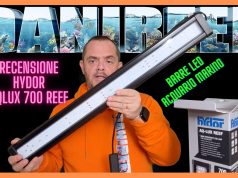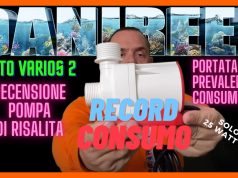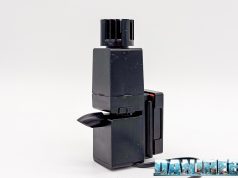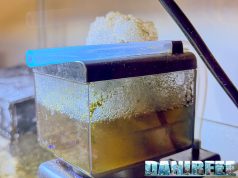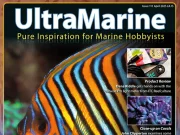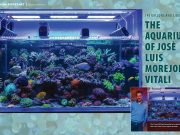At the beginning of the year Sicce presented the new adjustable flow Sicce XStream-E pumps. We are ready to write a review after stressing one of them for a few months (versione italiana).
The Sicce water moving pumps market is expanding towards new niches, and after positively reviewing the small fixed-flow pumps Sicce Voyager Nano 1000 and 2000, we moved forward to the new XStream-E as soon as we could.
After reading its declared flow rate, we were really surprised to see how compact it looked. A really tiny 8500/l electronic pump, not exactly like the Voyager Nano 1000 e 2000 but with an impressively small size.
Because of their adjustable flow rate between 3000 and 8000 l/h these pumps can be used from good sized nanoreefs up to 300-liters tanks, in which case a pair of them would be optimal for the overall tank water movement. They could also be used in freshwater aquariums in need of a greater flow.
Sicce XStream-E Technical Features
| European Version 230 V – 50 Hz |
American Version 120 V – 60 Hz |
|
| Flow Rate: | from 3000 to 8500 l/h | from 800 to 2250 US gph |
| Power Consumption: | 6-16.5 watt | 6-16.5 watt |
| Cable Length: | 2 meters | 78.7 ft |
| Width | 5,0 cm | 1.9 inch |
| Depth | 9,4 cm | 3.7 inch |
| Height | 3,8 cm | 1.5 inch |
With its 6 watt at 3000 l/h, and the 16.5 watt for 8500 l/h, the new Sicce XStream-E keeps an efficiency between 500 and 515 l/watt. A really good value for a pump with an adjustable flow.
To make the point clearer we can compare it with the slightly more powerful Nanostream 6095, its direct rival being electronic and with adjustable flow. The latter moves 9500 liters per hour with a 21 watt power consumption, for an efficiency of 452 l/h: the XStream-E results 10% more efficient. This obviously doesn’t happen if we compare it with pumps with much higher flow rates like the new Ecotech Marine Vortech MP40QD, with a 17200 l/h flow rate and an efficiency of 607 watt/l. It’s well known that much higher flow rates result in better efficiency. The main point here is to find the best efficiency in small electronic pumps.
From the economic point of view this pump’s RRP is 183.50 euros (you can also find it at € 165.00 on Tropical Nature), it therefore has an economic efficiency of 46 liters of water moved for each euro spent, against the 47.5 liters per euro of the Tunze Turbelle Nanostream 6095 and the 41 liters of Vortech MP40QD. Of course a fixed-flow pump would probably double up its economic efficiency, but that’s the cost of the adjustable flow, a feature that I personally believe to be essential.
The real price is usually a bit lower, we’ve just found it at € 165; but this happens for all pumps so we can just compare them with each other using the standard RRPs.
The package content can be seen above: the pump, holding magnet, quality certificate, instruction manual and controller. The beautiful box is just appropriate to the quality of the product inside
In my opinion a pair of Sicce XStream-E should be enough for an SPS aquarium up to 400 l, where they would move around 20 times the water volume. As today there is a tendency to bring movement to higher degrees, they could be used in a 300 l tanks for a perfect result. In smaller 100 l aquariums they should be set up with a fixed flow rate to avoid excess movement.
I used it in my 400 l tank, 130x60x50h, during its maturation. A tank of this size is probably at the limit of what this pump can be used for, while it could show its best in a 300 l aquarium.
The pump has been running for about 3 months, never being switched off. We consider this time long enough to find out little drawbacks or functioning defects, also considering we never cleaned it during this period of time. We like to mistreat our pumps to see what they can do!
The square-like pump body has a junction pin for the magnet, this allows the pump to be pointed in any direction with wide angles especially on the horizontal plane, the most useful at these levels. It’s a well adaptable pump. The water comes out of it from a protective grid which prevents animals getting accidentally in contact with the impeller.













